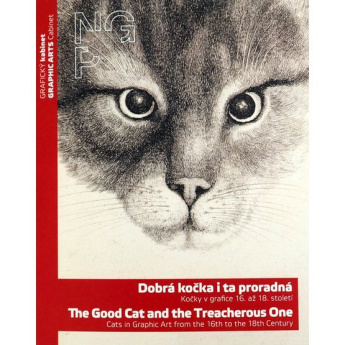Zařazeno v kategoriích: UMĚNÍ
Dobrá kočka i ta proradná / The Good Cat and the Treacherous One (Grafické kabinety)
Zelenková Petra
ISBN
978-80-7035-859-7
EAN
9788070358597
Malý katalog prezentuje mnohoznačné pojetí koček v umění od 16. až k přelomu 18. a 19. století. Jeho název a koncepce se odvíjí od jednoho z nejznámějších, ale také nejzáhadnějších děl Václava Hollara, leptu Dobrá kočka, která nemlsá (1646). S rozličně pojatou tematikou koček se setkáváme nejen v Hollarových leptech, ale rovněž na grafických listech a kresbách řady dalších umělců období raného novověku. V grafice se kočky jako hlavní námět objevují od 17. století, přičemž zejména oblíbené byly u nizozemských a vlámských umělců. Kočky byly zobrazovány v rámci alegorických, žánrových, portrétních či přírodovědných výjevů, v bajkách i satiře, a nacházíme je také v náboženských scénách. V profánním i sakrálním umění figurovaly jako nositelky řady symbolických a mnohdy protikladných významů.
The etching Head of a Cat (A Good Cat is Not Greedy) of 1646 is one of the best known works of Wenceslaus Hollar and can be regarded as his iconic piece. The diversely treated cat theme can also be found in prints and drawings by other artists, in which cats appear either as the main subject or a marginal motif. In old prints, cats were depicted in genre, allegorical, portrait, or natural science contexts, as well as in religious imagery. They were presented as bearers of symbolic or moralistic meanings. Artists were attracted by both their playfulness and mysterious traits, as well as their other ambivalent and even contradictory characteristics. The book accompanying a small exhibition will examine the highly varied artistic treatments of the cat theme in the works of graphic artists and draughtsmen from the 16th century up to the turn of the 19th century.
Ostatní s tímto titulem kupují:
-
Položka byla přidána do košíku.
















